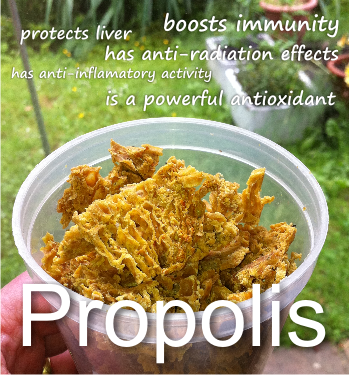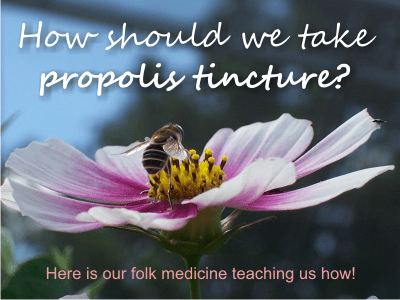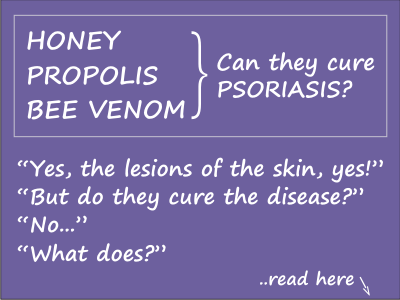I have just read about Jason Momoa’s gesture that encourages people to drink water from aluminum cans instead of plastic bottles. The man behind Aquaman and Khal Drogo (Game of Thrones) had a beard he has worn since 2012. He shaved it in a video posted on Instagram, in a bid to raise awareness about plastic pollution.
“Plastics are killing our planet” and “there’s only one thing that can really help our planet and save our planet, as long as we recycle, and that’s aluminum. (..) 75 percent of aluminum ever produced was still in circulation and that it was 100 percent recyclable.”, Momoa said.

While I salute his initiative, I am wondering if while aluminum cans are definitely healthier for our planet, are they also healthier for humans? Glass is the perfect alternative, of course, but it’s heavier and breaks too easily.
According to Grist’s Ask Umbra® it’s cheaper to make aluminum cans than glass bottles. Aluminum cans require polluting bauxite mining and is twice as energy-intensive as manufacturing glass, but…
But it’s nice and light and squat little cans are more efficient to ship than narrow-necked bottles. And what’s more important, it’s infinitely recyclable and doing so even more significantly lowers a can’s carbon footprint. (Aluminum is also very valuable to recyclers, who sell it to the auto industry).
In comparison, recycling glass is considered to be inefficient and expensive and companies don’t bother.
Aluminum is everywhere.
It is the third most abundant element in the earth’s crust and occurs naturally in the environment, foodstuffs, and drinking water.
– We drink from aluminum cans. Aluminum content in all soft drinks increases with storage time – show an early study from 1994 This increase was a result of dissolution of Al from the can wall due to the presence of aggressive ingredients in the soft drinks, mainly acids. The Al content rose with increasing acid concentration and decreasing pH value of the soft drinks. While the study considers that this Al increase still is a tolerable daily intake, it doesn’t specify how many soft drinks from Al cans we can consume per day, to remain within this tolerable range.
– We eat aluminum as it is contain in multiple food products. It is contained in flour, baking powder or coloring agents. Here is a study on the aluminum-containing food additives. 19 out of 90 food samples contained Al levels exceeding the tolerable weekly intake for young children (body weight: 16 kg) when consuming two servings/week.
– We cook in aluminum pans, using aluminum foil to blanket the food. Acidic foods such as lemon juice and tomato as well as some spices react with aluminum, causing the metal to leach into the food. When this happens, the concentration of aluminum in food increases and may surpass the recommended limit for adults.
– Aluminum enters our body without us knowing it. Conventional drugs may contain it: antiacids (300–600 mg aluminum hydroxide (approximately 104–208 mg of aluminum) per tablet) and common aspirin (10–20 mg of aluminum per tablet), not to mention the so-controversed vaccines (when it is injected straight into the bloodstream, max 0.85 mg/dose); It is also used in desensitization procedures.
Around 0.1% of orally ingested aluminum is absorbed from the gastrointestinal tract and is made bioavailable.
– Antiperspirants can contain it (suspected to trigger breast cancer) and other cosmetic products, sun creams, and toothpaste.
– Geoengineering disperses aluminum directly into the atmosphere.
The tolerable weekly intake set by the European Food Safety Authority (EFSA) is of 1 mg aluminum/kg body weight (BW) in a 60-kg adult and can be reached through dietary exposure alone. This amount is in some individuals already exhausted or slightly exceeded as a result of estimated daily alimentary aluminum exposure of 1.6–13 mg (0.2–1.5 mg/kg BW/week). Relative exposure in children is higher at up to 2.3 mg/kg BW/week.
Is aluminum bad for our body?
Unfortunately, yes. Our body eliminates it through urine and feces, but a higher amount may accumulate in the liver, lungs, kidneys, thyroid and brain. Infesting the organs, aluminum begins to compete for important minerals like calcium. It can affect skeletal mineralization by depleting the bones of calcium storage. There is also much evidence suggesting that aluminum afflicts the central nervous system and can lead to mental impairments like Alzheimer’s disease. So yes, too much aluminum is bad for our health.
Aluminum toxicity is associated with anemia, impaired bone metabolism, neurologic defects and parenteral nutrition (PN)-associated liver disease (Hall AR, 2017). A recent study found that aluminum may be responsible for the rise in male infertility.
The internal aluminum load is measured in terms of the concentration of aluminum in urine and blood. Keeping these concentrations below the tolerance values prevents the development of manifest and subclinical signs of aluminum toxicity.
“The Health Effects of Aluminum Exposure” is a 2017 review by Klotz K and his team, based on publications retrieved by a selective search of the PubMed and SCOPUS databases on the topic of aluminum in connection with neurotoxicity, Alzheimer’s disease, and breast cancer, as well as on the authors’ personal experience in occupational and environmental medicine.
But scientists also offer a solution. Propolis. Propolis treats aluminum toxicity
In a study from 2014, conducted by L.J. Devon and Staff Writer, propolis was shown to have been able to combat aluminum toxicity and work in synergy with a chelating agent.
In the experiment, rats were administered aluminum nitrate at a dose of 32.5 mg/kg (1/2 of LD50 (a dose that would kill 50% of population). The aluminum-induced toxicity showed up in the cells. Uric acid, cholesterol and urea levels climbed and were found in serum.
After one day of aluminum-induced toxicity, scientists separated the rats into 3 groups.
– Group 1 was given 20 mg/kg HEDTA [N-(2-hydroxyethyl ethylene diamine triacetic acid – a chelating agent]
– Group 2 was given 200 mg/kg propolis.
– Group 3 was given both HEDTA and propolis.
The scientists observed the effects compared to a control group.
Individual treatments of HEDTA helped restore the cells, preserving histological features. But propolis was even more effective and helped mitigate oxidative stress.
When both were administered, the results were even greater, as liver, kidney and brain functions showed drastic improvements, resembling the control group. One of the most important turnarounds was in the AChE (acetylcholinesterase) activity of the forebrain, midbrain and hindbrain. The activity of the brain in all three areas was reduced by aluminum toxicity. Propolis helped reawaken the brain, restoring nervous system tissues.
As aluminum exerts its negative influence on living cells, propolis can be used to counteract the damage, protecting the kidney, liver and brain from aluminum toxicity.
If high uric acid levels, urea levels and cholesterol levels are in fact caused by aluminum toxicity, then propolis could be a great alternative medicine for those suffering from poor metabolism, high levels of bad cholesterol and gout.
Why is propolis so valuable? Read more on its composition.
This is not the only study showing the value of propolis. Not even treats toxicity, it is also able to prevent it. Propolis protects liver, has anti-radiation effect, boosts immunity and has anti-inflammatory activity.
There are 2,964 studies available to the public on ncbi.nlm.nih.gov.
Aluminum occurs ubiquitously in the environment and is absorbed via food, the use of certain materials and articles, cosmetic products and drugs. From a preventive medicine perspective, aluminum exposure should be kept as low as possible (principle of minimizing) – scientists say.
Are we doing this if we now replace water bottles with aluminum cans? Not quite. But if this happens in the future, please make sure to include propolis in your diet. Extracts or capsules, just take it. You will be amazed of its benefits. Keep in mind that in the study, scientists use 200mg/kg bw.
NaturaNectar Red Bee Propolis, Vegetable Capsules, 60 Count – available on Amazon
Aluminum is bad for honey bees, too.
Aluminum is a known neurotoxin that in large amounts affects animal behavior and scientists have discovered that bees’ brains are contaminated with the metal, with toxicity ranging from 13 to 200 parts per million (ppm). That is an enormous amount for such a tiny creature – to put it in context, 3 ppm is considered potentially dangerous for a human brain.
This discovery may explain why some bees present a type of dementia called aluminum-induced cognitive dysfunction.
Bottom line, Jason, you are right. Aluminum cans are better for our planet. However, rivers and oceans can be suffocated by aluminum cans, just as they are now by plastic recipients. It’s not the container that is bad. It’s our lack of education. Our lack of conscience and awareness. Whoever throws away a plastic bottle does the same with aluminum cans or glass bottles.
Aluminum foil takes about 400 years to break down and although recyclable, most of it ends up in the oceans or landfills.
Plastic bottles can also be recycled. But they are not. Probably because they are not as valuable as aluminum cans, case in which I agree with Jason Momoa. Sell water from aluminum cans, as they can be exchanged for real money, and thus won’t suffocate the planet, as plastic does.
But mostly, we should keep on educating people. We can start from asking the big producers to stick a warning message/image on every recipient, no matter its material. To offer free recycling bags with them. Solutions can be found. Because they are the first who should care more.

Aluminum cans may be better for the planet’s health, but not of humans.
*****************
References:
Beard to Promote Aluminum Cans Over Plastic Bottles
http://europepmc.org/backend/ptpmcrender.fcgi?accid=PMC5651828&blobtype=pdf
https://sciencing.com/dangers-aluminum-foil-8314412.html
https://www.atsdr.cdc.gov/phs/phs.asp?id=1076&tid=34



